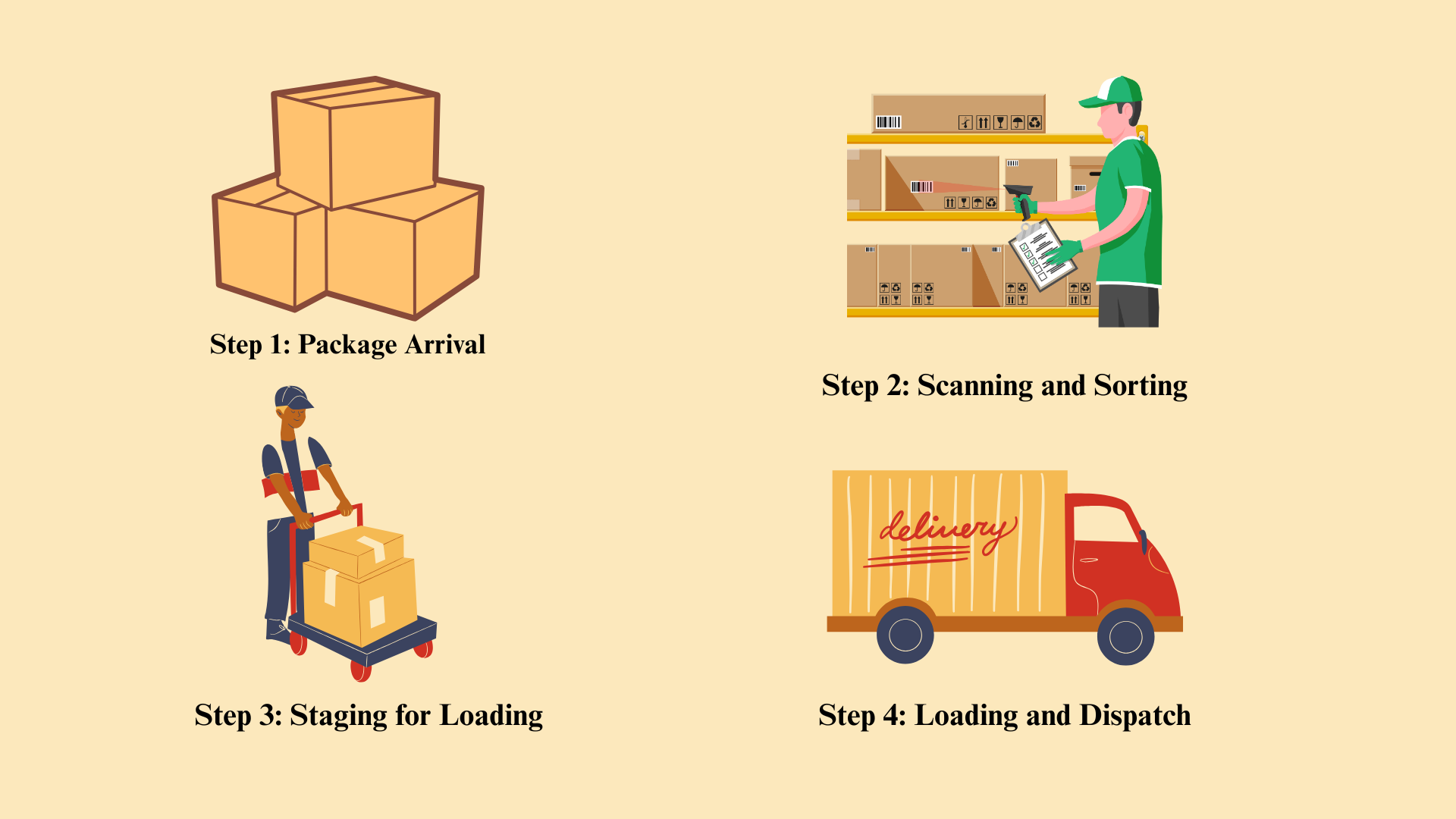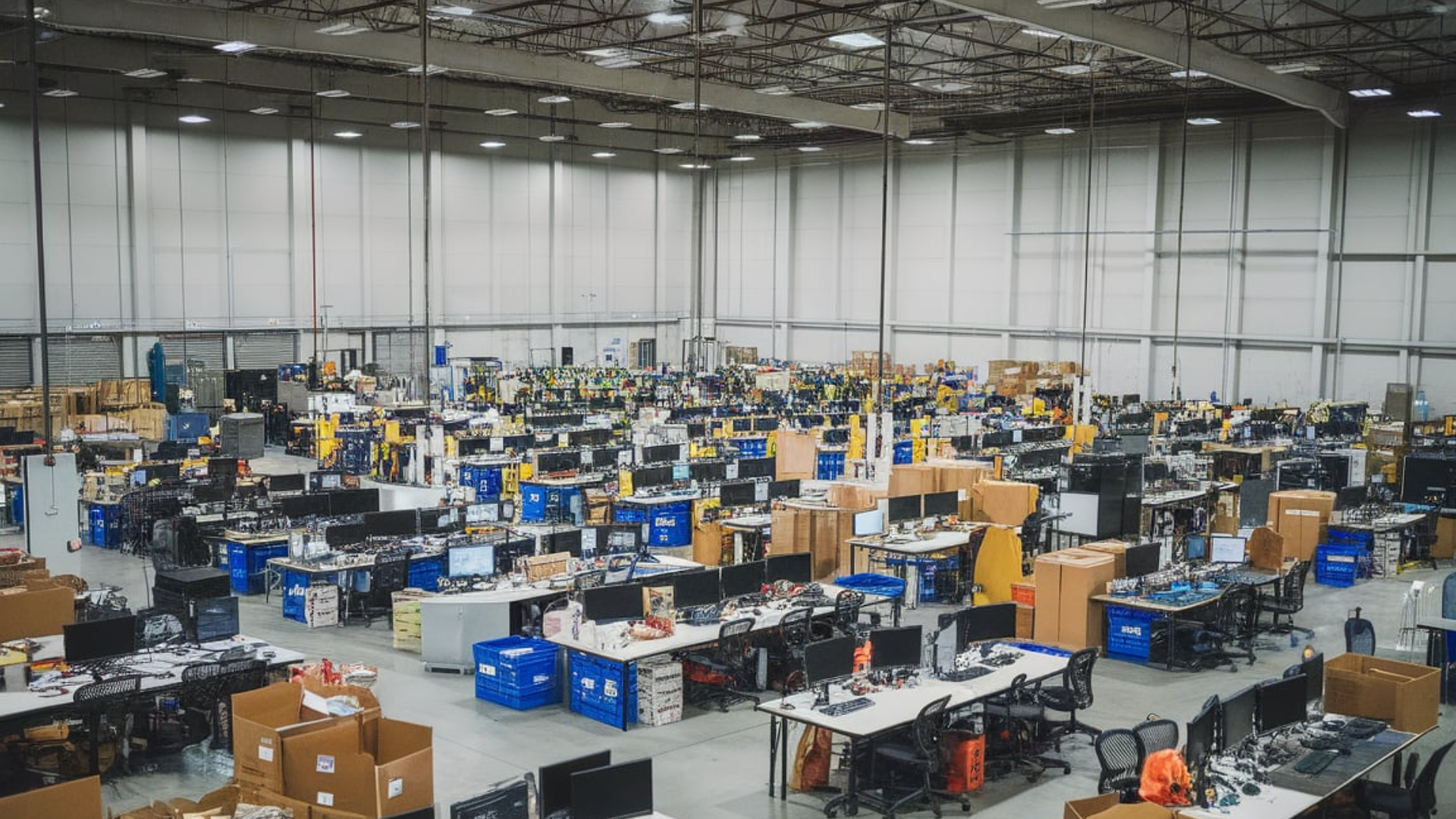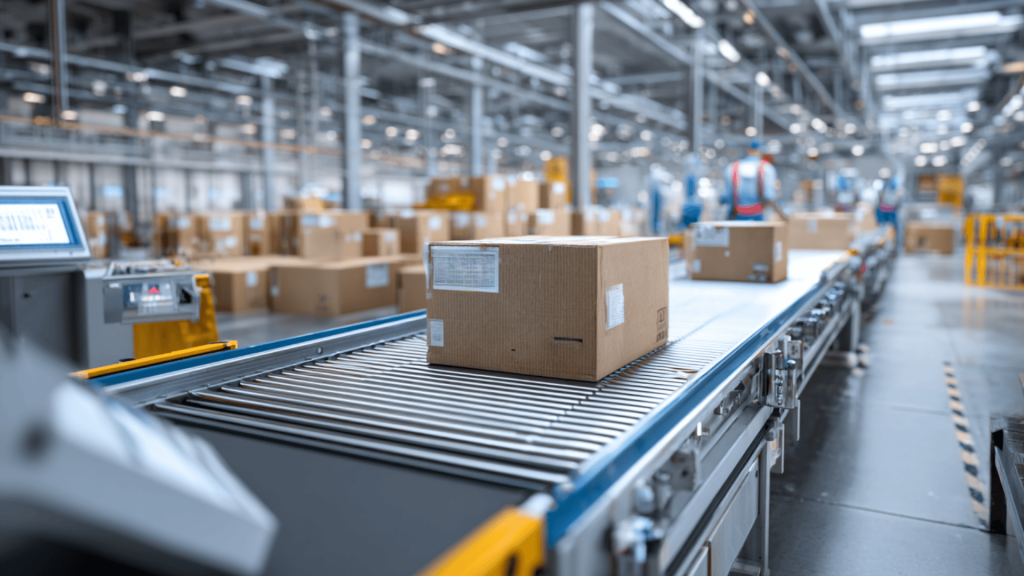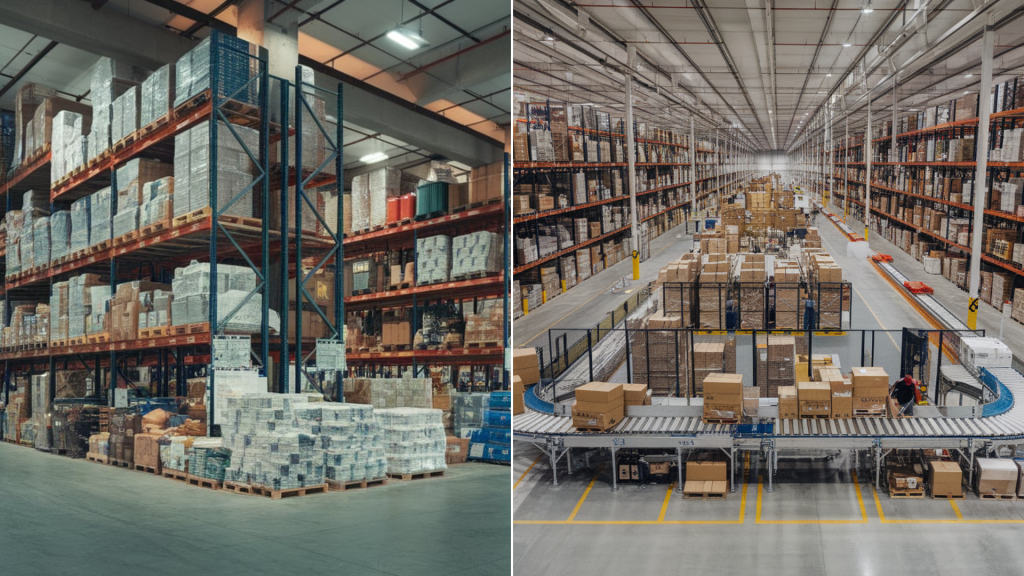When I first heard the term last mile sorting and distribution center, I wasn’t sure what it really meant. Over time, I learned it’s one of the most important links in the delivery chain.
This is the place where packages are sorted, organized, and sent out for final delivery to homes or businesses. Without these facilities, deliveries would take longer and cost even more.
In this post, I’ll explain what a last-mile sorting and distribution center is, how it works, and why it plays such a big role in keeping modern shipping fast, reliable, and customer-friendly.
What is a Last Mile Sorting and Distribution Center?
The last-mile sorting and distribution center is a facility where packages are prepared for their final trip to the customer.
It comes into play after items leave a fulfillment or regional center. Instead of storing products long-term, these centers focus on sorting packages quickly and moving them closer to the delivery address.
Inside, packages are scanned, grouped by destination, and loaded onto trucks or vans. This step makes delivery faster and more efficient, especially in busy cities.
Unlike big warehouses that keep inventory, a last-mile sorting and distribution center is designed for speed and flow.
Its main job is to get your order from a shipping hub to your doorstep as quickly as possible.
Package Flow in the Last Mile Sorting and Distribution Center

When I think about how a package gets to my door, this step is one of the most interesting parts. It’s where the journey speeds up and heads toward the finish line.
1. Package Arrival
The journey starts when packages reach the last-mile sorting and distribution center from fulfillment or regional hubs.
At this stage, the main goal is to bring shipments closer to the customer. Each package is checked in, scanned, and verified to make sure it matches shipping records.
This step also helps identify any damaged or mislabeled packages before they move further into the system.
2. Scanning and Sorting
Once inside, packages go through detailed scanning and sorting. Barcodes or labels are scanned, and items are grouped by delivery zone, carrier, or final route.
Some centers use automated conveyors or put-to-route walls, while others rely on manual sorting teams.
The purpose is simple: organize packages so that drivers can make efficient stops without wasting time or fuel.
3. Staging for Loading
After sorting, packages move into staging areas where they are organized for outbound trucks or vans. Staging helps separate routes and ensures packages are loaded in the right order.
For high-volume centers, this step is critical during peak shopping seasons when thousands of packages pass through in a single day.
By organizing early, workers reduce loading delays and improve on-time performance.
4. Loading and Dispatch
The final step is loading and dispatching. Packages are carefully placed into vans or trucks, often in reverse delivery order, so drivers can unload smoothly during their routes.
Dispatch teams check that each route is ready and send drivers out on time. Good planning here speeds up delivery, cuts missed stops, and keeps customers satisfied.
Understanding this flow shows just how important timing and accuracy are. Without these steps, last mile delivery would be slower, less efficient, and more costly.
Core Functions That Keep the Last Mile Moving
A last-mile sorting and distribution center doesn’t just move packages around – it follows a set of key steps to keep deliveries on track. Each function is designed to make sure packages get where they need to go quickly and safely.
- Inbound receiving and scanning: Every package is checked in and scanned as soon as it arrives.
- Sorting by route or zone: Packages are grouped based on their delivery locations.
- Staging and loading: Items are organized and placed in the right area before being loaded onto trucks or vans.
- Returns handling: Returned packages are collected and sent back into the system.
These core functions keep the last mile running smoothly and customers satisfied.
Sort Center vs. Last Mile Delivery Station
I’ve often seen people confuse a sort center with a delivery station, but they’re not the same thing. Both are key steps in the last mile, yet they serve different purposes.
| Feature | Last Mile Sorting & Distribution Center | Last Mile Delivery Station |
|---|---|---|
| Main Role | Sorts packages by route, zone, or carrier | Prepares and dispatches delivery routes |
| Inventory | No long-term storage, flow-through only | No storage, staging only |
| Activities | Scanning, sorting, staging trailers | Route planning, van loading, driver dispatch |
| Location | Near regional hubs or metro areas | Close to neighborhoods or delivery zones |
| Output | Sends packages to delivery stations | Sends packages directly to customers |
Knowing the difference helps you see how packages move step by step, first through sorting, then through a delivery station, and finally to your door.
Why Location and Layout Matter in the Last Mile

Choosing the right location and layout for a last-mile sorting and distribution center is all about speed and access. The closer it is to customers, the faster packages can reach their final stop.
- Site location: Usually near highways, airports, or dense neighborhoods for easy access.
- Facility size: Enough space for sorting areas, staging zones, and truck parking.
- Flow design: Clear pathways from inbound docks to sorting lines and outbound doors.
- Flex space: Extra room to handle seasonal surges or peak shopping times.
- Driver access: Plenty of loading doors and safe areas for vans and trucks.
A smart location and simple layout make the center more efficient, keeping deliveries fast and customers happy.
People, Tech, and Tools in the Last Mile Sorting and Distribution Center
Running a last mile sorting and distribution center takes both skilled people and the right tools. Together, they keep packages moving quickly and safely from arrival to delivery.
- Staff roles: Workers handle receiving, sorting, dispatch, quality checks, and yard management.
- Safety and ergonomics: Training and equipment reduce strain in fast-paced, high-volume environments.
- Technology systems: Sortation equipment, route optimization software, tracking tools, and proof of delivery systems guide daily operations.
- AI and automation: Machine learning improves accuracy, speeds up sorting, and predicts delivery delays.
- Equipment and methods: Conveyors, put-to-route walls, and mobile carts organize packages efficiently.
- Urban delivery tools: E-bikes, electric vans, and micro-hubs help reduce costs and emissions in dense cities.
By combining skilled teams with smart technology and modern equipment, these centers keep the last mile both efficient and reliable.
Managing Costs in Last-Mile Operations
Running a last mile sorting and distribution center isn’t just about moving packages, it also comes with major costs. Understanding where these expenses come from makes it easier to manage them and find savings.
| Cost Factor | What It Means | Estimated Avg Cost |
|---|---|---|
| Labor | Staff wages for sorters, drivers, and dispatch | $15–$25 per hour per worker |
| Facility Operations | Rent, utilities, maintenance | $5–$10 per sq. ft. annually |
| Transportation | Vans, fuel, insurance, maintenance | $0.50–$1.00 per package |
| Technology & Automation | Sortation systems, routing software, scanners | $0.10–$0.30 per package |
| Packaging & Supplies | Labels, pallets, shrink wrap, packing material | $0.05–$0.15 per package |
| Failed Deliveries/Returns | Reattempts, reverse logistics costs | $15–$20 per failed delivery |
Every dollar in the last mile shapes the total cost of delivery. By tracking expenses and using automation, smarter routing, and efficient staffing, businesses can boost efficiency and keep last-mile delivery affordable for both themselves and their customers.
Conclusion
Managing a last-mile sorting and distribution center takes planning, people, and the right tools.
From receiving and scanning packages to routing drivers and handling returns, every step has a direct impact on cost and customer satisfaction.
These centers may not store inventory like large warehouses, but they are the heartbeat of fast, reliable delivery. The location, layout, staff, and technology all work together to keep packages moving smoothly.
I’ve seen that when businesses focus on efficiency here, they save money while improving the customer experience.
For more practical insights on logistics, delivery systems, and shipping strategies, read my other blogs for advice that helps streamline operations and improve results.





